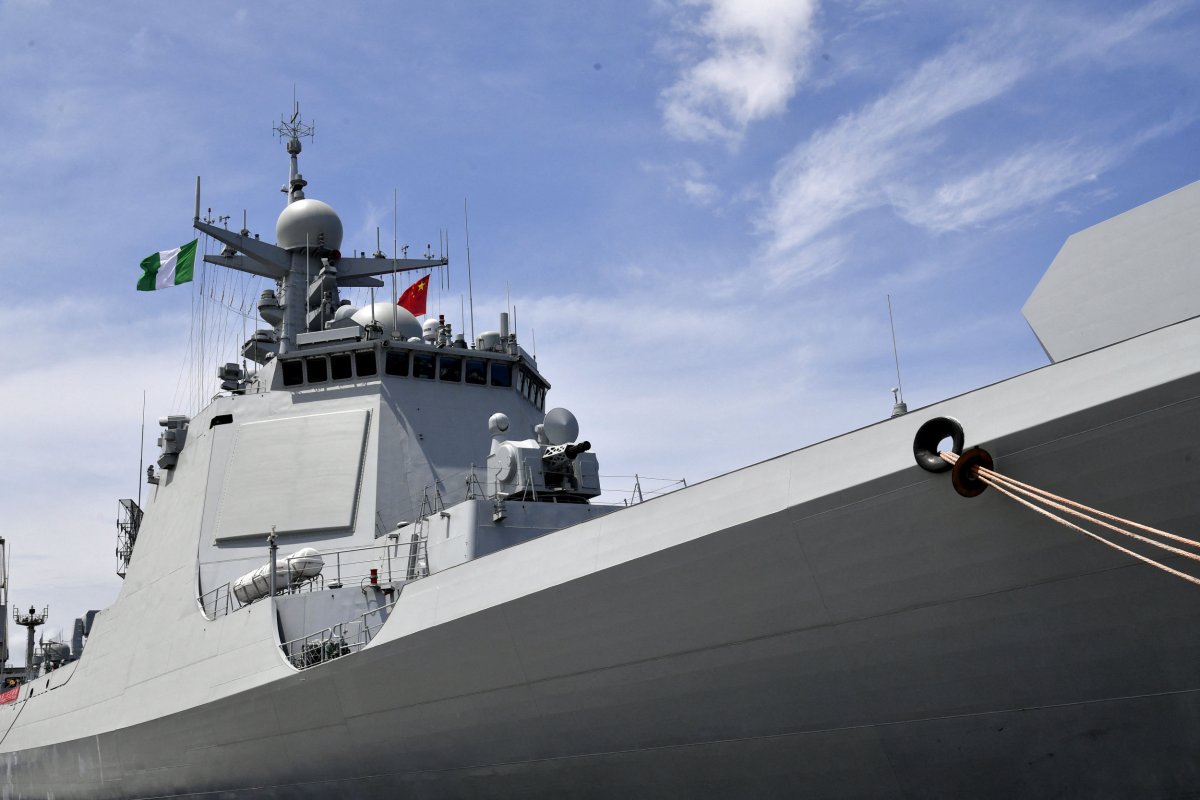What’s New
The Chinese navy has expanded its reach and presence far away from the country’s shores as it visited countries in Asia, Africa, the Middle East and the South Pacific Ocean this year, according to a map provided by the Pentagon in its report on Chinese military power.
The Chinese defense ministry did not immediately respond to a request for comment.
Why It Matters
In its report released on Wednesday, the United States Defense Department said China, which remains the top pacing challenge for the U.S. military, has the largest naval force in the world by hull count, with a battle force of more than 370 ships and submarines.
In addition to the expansion of the naval fleet, China has sent warships to gain experience in extended-range operations, including to the eastern Indian and western Pacific oceans. One of its aircraft carriers was deployed to the Philippine Sea three times last year.
What to Know
The Chinese navy “conducted a robust level of global engagements” last year, the report said, including port calls for exercises, exhibitions, training and humanitarian missions. It assessed that China seeks to further expand its global military presence through port calls.
According to the Pentagon’s map, Chinese naval vessels made port calls at every country in the South China Sea this year, where Beijing’s sovereign claims overlap with those of regional nations, including the Philippines, an American security ally, and Vietnam.
In South Asia and the Middle East, the Chinese navy visited Beijing’s two major partners, Pakistan and Iran. China has described the nature of its partnership with Pakistan as “iron brothers.” In March, it took part in a war game with Iran and Russia in the Gulf of Oman.
The Chinese naval footprint also reached Africa, a key region for China’s Belt and Road Initiative that expands its influence through infrastructure projects. Several port calls were made on West Africa’s Atlantic coast, where the U.S. military expressed concern over Chinese plans for a military base there, across the Atlantic Ocean from America’s East Coast.

Chinese and Nigerian flags fly on a Chinese warship on a visit to Nigeria at Apapa harbor in Lagos, on July 4, 2023. The U.S. military expressed concern over Chinese plans for a military base on Africa’s Atlantic coast.
PIUS UTOMI EKPEI/AFP via Getty Images
In the Pacific Ocean, the Chinese navy visited Vladivostok in Russia’s Far East region for an exercise in September. It made port calls at six South Pacific island nations, including Kiribati, Tonga, Fiji, Vanuatu, the Solomon Islands and Papua New Guinea, the report said.
Besides Africa, the South Pacific is another region where China and the U.S. are jostling for influence. While Beijing’s engagement with regional nations brings potential economic benefits, experts worry that these nations could become overly dependent on China.
What People Are Saying
The U.S. Defense Department said in its Chinese military power report: “The PLAN [People’s Liberation Army Navy of China] continues to develop into a global force, gradually extending its operational reach beyond East Asia into a sustained ability to operate at increasingly longer ranges, including a continuous presence in the Gulf of Aden.”
Lin Jian, the Chinese Foreign Ministry spokesperson, said at a press conference in Beijing on Thursday: “China is fully committed to being a force for peace, stability and progress in the world.”
Collin Koh, a senior fellow at Singapore’s Institute of Defense and Strategic Studies, told Newsweek on Thursday: “Given that Beijing has mainly focused on the Western Pacific, which is where its core interests largely reside, naval force projection mainly concentrates on this theater. It was only in the recent over a decade or so that it started to look west – into Indian Ocean as a result of its growing strategic and economic interests – especially energy security – in that region, extending to the Middle East and Africa, and south into the Pacific Islands region.”
What Happens Next
The Pentagon’s map did not show any Chinese naval port calls in the Western Hemisphere this year, a region that has long been regarded as “America’s backyard.” It remains to be seen whether China will send its naval fleet to North and South America next year.





